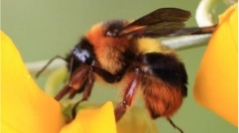

 European Journal of Taxonomy
892 (1) - Pages 1-65
European Journal of Taxonomy
892 (1) - Pages 1-65The mountain bumblebees of the subgenus Alpigenobombus Skorikov, 1914, are uniquely distinctive because the females have enlarged mandibles with six large, evenly spaced teeth, which they use to bite holes in long-corolla flowers for nectar robbing. Recognition of species in this subgenus has been uncertain, with names used in various combinations. To revise the species, we examined COI-like barcodes for evidence of species’ gene coalescents using MrBayes and PTP and we compare the coalescent groups with morphological variation for integrative assessment. While we seek to include only orthologous barcodes (the ‘good’) and exclude all of the more strongly divergent barcode-like numts (the ‘bad’), for some nominal taxa only low-divergence numts could be obtained (the ‘ugly’). For taxa with no orthologous sequences available, using a minimum number of the lowest divergence numts did yield coalescent candidates for species that were consistent with morphologically diagnosable groups. These results agree in recognising 11 species within this subgenus, supporting: (1) recognising the widespread European Bombus mastrucatus Gerstaecker, 1869 stat. rev. as a species separate from the west Asian B. wurflenii Radoszkowski, 1860 s. str.; (2) the recently recognised B. rainai Williams, 2022, as a species separate from B. kashmirensis Friese, 1909, within the western Himalaya; (3) the recognition once again of B. sikkimi Friese, 1918 stat. rev. and B. validus Friese, 1905 stat. rev. as species separate from B. nobilis Friese, 1905 s. str. within the eastern Himalaya and Hengduan regions; (4) confirming the recognition of B. angustus Chiu, 1948, B. breviceps Smith, 1852 s. lat., B. genalis Friese, 1918, and B. grahami (Frison, 1933) as separate species within the Himalaya, China, and Southeast Asia; (5) recognising the conspecificity of the nominal taxa (not species) channicus Gribodo, 1892 (Southeast Asia) and dentatus Handlirsch, 1888 (Himalaya) as parts of the species B. breviceps s. lat. (southern and eastern China); and (6) recognising the conspecificity of the rare taxon beresovskii (Skorikov, 1933) syn. n. as part of the species B. grahami within China. Nectar robbing by bumblebees is reviewed briefly and prospects for future research discussed.